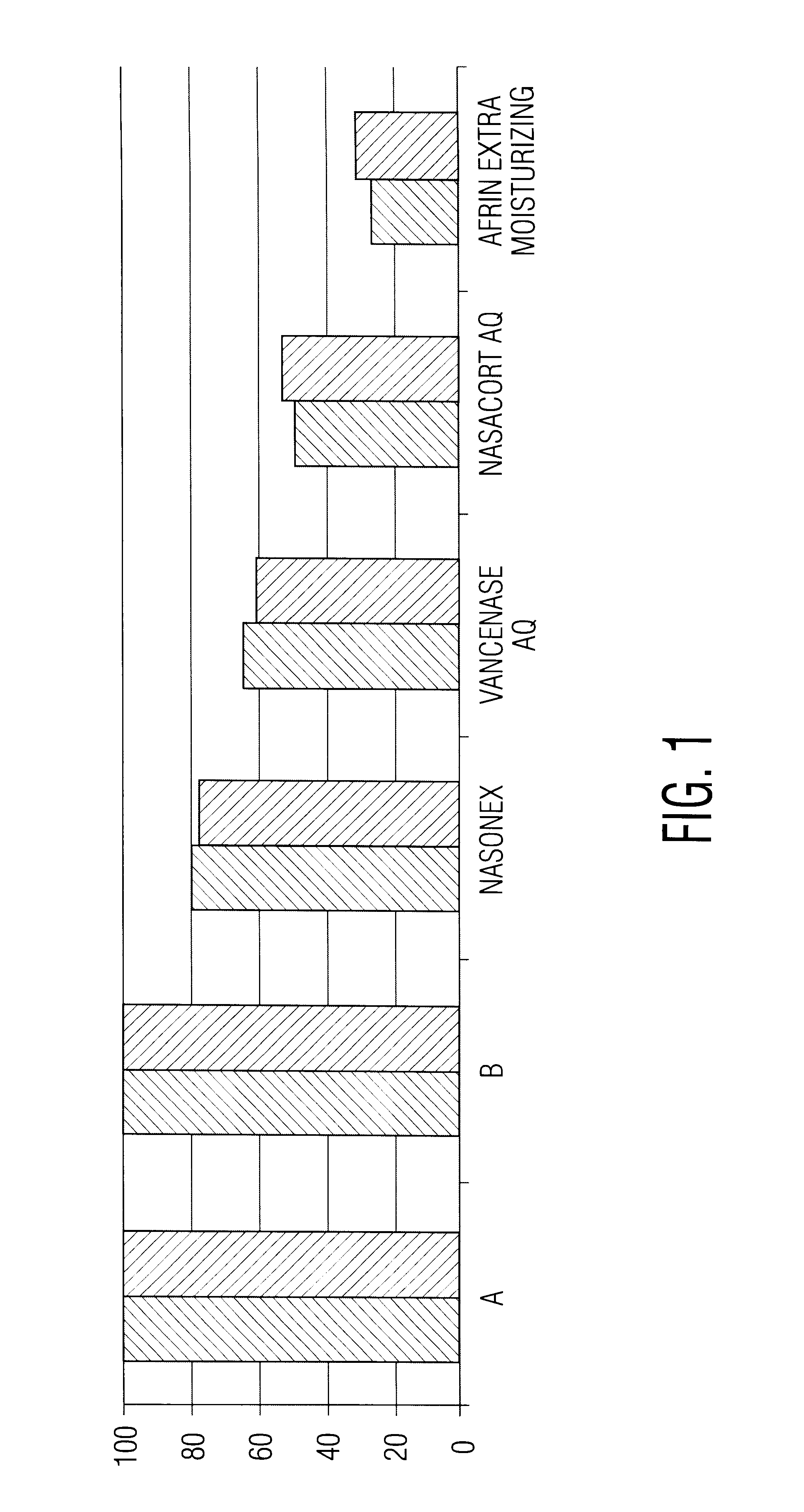Spray composition with reduced dripping
a composition and dripping technology, applied in the field of fluid compositions, can solve the problems of low active agent efficiency, large portion of the active agent introduced into the nose is generally rendered unavailable for its intended use, and no reported application of this material in the composition, so as to reduce the tendency to drip or run, reduce the variation of formulation characteristics, and relieve oropharyngeal discomfort.
- Summary
- Abstract
- Description
- Claims
- Application Information
AI Technical Summary
Benefits of technology
Problems solved by technology
Method used
Image
Examples
example 2
Nasal spray compositions are prepared in accordance with the invention, using the general procedure of the preceding example and the following ingredients (where amounts are weight percentages):
example 3
Nasal spray compositions are prepared in accordance with the invention, using the general procedure of preceding Example 1 and the following ingredients (where amounts are weight percentages):
example 4
Commercially available nasal spray compositions are tested against the composition of preceding Example 1, to identify differences in their dripping potentials. In the test, borosilicate glass test tubes are weighed, then clamped in an inverted vertical position. The nasal spray bottle is weighed, placed under the mouth of the test tube, sprayed twice and then immediately removed. After 60 seconds, the test tube is turned vertically to position the mouth at the top and is weighed to quantify the amount of nasal spray that did not drip out. The nasal spray bottle is weighed to determine the amount delivered by the two spray actuations, and the percentage of the delivered dose remaining in the test tube is calculated.
Results are as shown in the following table and in the graph of FIG. 1, where bars "A" and "B" represent the percentage of sprayed material remaining in the tube for two different preparations of the composition of Example 1. The remaining legends of the graph identify th...
PUM
| Property | Measurement | Unit |
|---|---|---|
| weight percent | aaaaa | aaaaa |
| viscosity | aaaaa | aaaaa |
| weight | aaaaa | aaaaa |
Abstract
Description
Claims
Application Information
 Login to View More
Login to View More - R&D
- Intellectual Property
- Life Sciences
- Materials
- Tech Scout
- Unparalleled Data Quality
- Higher Quality Content
- 60% Fewer Hallucinations
Browse by: Latest US Patents, China's latest patents, Technical Efficacy Thesaurus, Application Domain, Technology Topic, Popular Technical Reports.
© 2025 PatSnap. All rights reserved.Legal|Privacy policy|Modern Slavery Act Transparency Statement|Sitemap|About US| Contact US: help@patsnap.com



